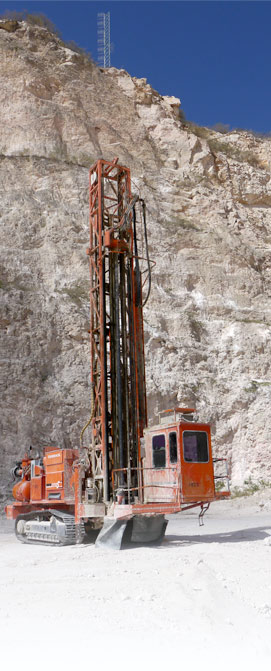History
Formation process
Influenced by extreme pressure, limestone was formed on the mountain a few million years ago, originating from marine animals. The phosphate on the mountain was the result of layers of bird droppings.
Early Activity
In 1874 the Englishman John Godding started digging up phosphate on the Tafelberg (Table Mountain) on Curacao. This high-grade phosphate was mainly used as a component in fertilizers and for cattle feed and was shipped to Europe and the United States.
Company Foundation
On December 31st 1912 Godden’s activities became part of the Mijnmaatschappij Curacao (MMC) founded in Amsterdam, The Netherlands.
Export
Later in 1958 limestone is also extracted. Due to its characteristics, like hardness and purity, a primary raw material for the concrete, asphalt and glass industry, limestone became an important product for the industry sector and using its own port for Export.
In 1979 the phosphate mining ceased due to lack of high-grade material supply, while limestone quarrying was booming. Nowadays a Low Grade Rock Phosphate is still mined and exported to the Caribbean and Latin region.
Mijnmaatchappij Curacao has anticipated on the changing demand for the market, by focussing on quality and added value. We have consequently extended our product range, adding excellent export services, storage and reship facilities to our clients.
Innovation
In 2001 the refurbished plant allows the export market growth possibilities from 100K tons per year to 400K tons per year. Using the very latest crushing technologies combined with special binder screening units MMC can guarantee the ASTM requirements. Consistency and customizability in aggregate sizes and mixes further strengthens MMC’s position within the international market and its demands.
In October 2013 the Mining Company Curaçao has replaced his existing crushers at the Primary and Secondary completely by new Telsmith crushers.
This refurbishment results in a higher production rate and optimize the crushing process.
The existing primary jaw crusher was from 1959 and did not meet the current production requirements.
The primary jaw crusher, which crushes the big boulders to smaller rocks, consisted out of a feeder and a jaw crusher. The base from the old crusher has remained and the new jaw crusher was installed using the same base. The feeder has been replaced by a grizzly feeder which results in a better “feed” for the secondary crusher.
This secondary crusher (also 30 years old) has also been replaced by an new Telsmith rotary impacter.
The MMC is part of Curacao’s history having contributed so significantly to the island and its industry.

*Fun Fact:
John Godding originally discovered phosphate on Klein Curacao while sailing the Leeward Islands looking for minerals. Klein Curacao is an virtually uninhabited and much smaller sister island of Curacao.
*Fun Fact:
The earliest written reference to the Santa Barbara plantation, where the mine is situated, and covers and area of about 1200 hectares, dates back to the 16th century.
*Fun Fact:
Did you MMC’s previous (old) crusher was 56 years old!


